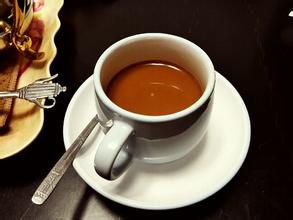Flavor description of Robusta coffee beans Variety characteristics Taste grindness Introduction
Robasta bean
In fact, as a standardized process, it serves the professional cup testing system. For the general public who drink coffee is just a simple hobby, there is really no need to take it seriously, not to mention that the taste itself is very subjective. They think that delicious coffee beans are generally divided into two categories. Different soil and climate also have a great impact on the quality of coffee beans. When you buy coffee beans, you may see that dazzling adjectives are used to describe different coffee flavors, such as tropical fruit flavor, caramel flavor, nut flavor, cocoa flavor and so on. But when you do get the beans, you will find that you can't taste so many flavors in the description at all, and you will inevitably laugh at yourself at "dull taste buds" or even lose interest in coffee. In fact, I think it is very normal to taste the flavor that cannot be described. These descriptions of coffee flavor actually come from the coffee flavor wheel produced by SCAA (Specialty Coffee Association of America).
Congo, which originated in Africa, accounts for 20% of the world's output. It is suitable for lowlands below 500 meters. It has strong adaptability to the outside world, can resist bad climate, resist diseases and insect pests, and can be allowed to grow in the wild. It is a kind of coffee tree that is easy to cultivate. It is generally used to make instant coffee with strong adaptability to the outside world. It can resist bad climate, resist diseases and insect pests, and prepare the land. Weeding and pruning do not require much manual care, and can be allowed to grow in the wild. It is a kind of coffee tree that is easy to cultivate. But its flavor is more bitter than Arabica, and its quality is much lower, so it is mostly used to make instant coffee. In general, the coffee sold in fast food restaurants is mainly made of coffee beans grown in Robasta. Because it is made in Africa, most Africans drink robastian coffee.
The Robasta coffee tree is originated in the Congo in Africa. It is suitable for growing in lowlands below 500 meters above sea level, and is highly adaptable to the outside world.
It accounts for about 20 per cent of world output and ─ 30 per cent. It has strong resistance to tropical climate and is easy to cultivate. It grows very well at 200 ─ 300m above sea level. However, its unique resistance also makes its concentration higher and its taste more bitter. Its caffeine content is high (2 ─ 4%). Coffee beans are round in shape, brown in color and with straight grooves.

Important Notice :
前街咖啡 FrontStreet Coffee has moved to new addredd:
FrontStreet Coffee Address: 315,Donghua East Road,GuangZhou
Tel:020 38364473
- Prev

Introduction to the characteristics of Grinding degree of Arabica medium and shallow roasted Coffee Bean Flavor description
Introduction to Arabian coffee beans, but as a roaster, the decision on the level of coffee roasting should not only start from the roaster's personal fun and hobby, but should focus on the needs of the audience, so shallow roasting is reasonable. Deep baking has the principle of deep baking, the two are not good or bad consistent. If your servant pursues the sense of taste and coffee to create the local characteristics.
- Next

Introduction to the historical varieties of Italian espresso
Espresso Italian espresso (Cappuccino) making and boiling A real espresso consists of 1/3 coffee (an espresso), 1/3 hot milk and 1/3 milk foam (half espresso and half hot milk in the cup). Milk foaming Note: be sure to use cold milk, hot milk is difficult
Related
- Beginners will see the "Coffee pull flower" guide!
- What is the difference between ice blog purified milk and ordinary milk coffee?
- Why is the Philippines the largest producer of crops in Liberia?
- For coffee extraction, should the fine powder be retained?
- How does extracted espresso fill pressed powder? How much strength does it take to press the powder?
- How to make jasmine cold extract coffee? Is the jasmine + latte good?
- Will this little toy really make the coffee taste better? How does Lily Drip affect coffee extraction?
- Will the action of slapping the filter cup also affect coffee extraction?
- What's the difference between powder-to-water ratio and powder-to-liquid ratio?
- What is the Ethiopian local species? What does it have to do with Heirloom native species?

